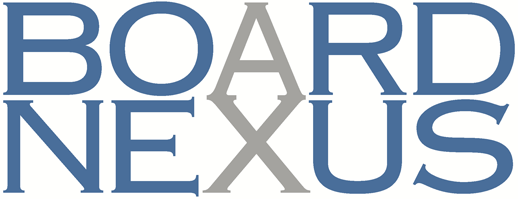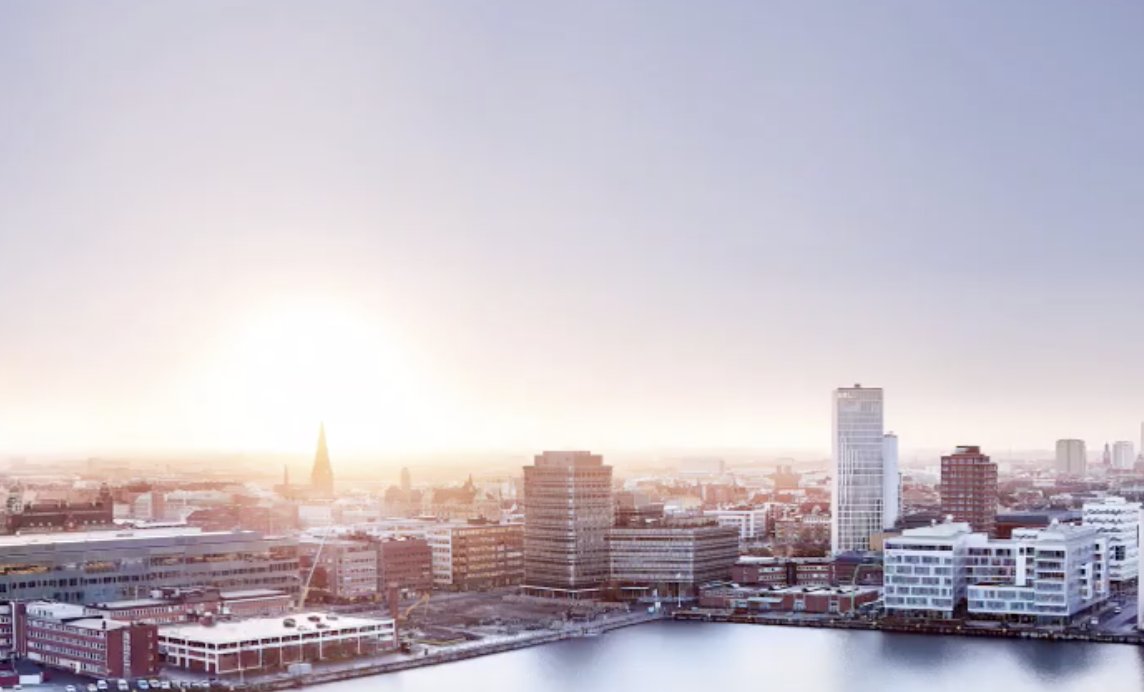An independent business unit that aims to spearhead new business, move the organization forward and create a digital ecosystem for smart connected buildings. That’s CEO Johan Dozzi ́s plan for the digitalization of Swedish engineering and design consultancy Tyréns. He wants to take the lead in the digital race.
“We try to be best at people, innovation and clients. That has a huge impact on our corporate culture. And it makes us a profitable company. But the purpose is not to maximize profits; the purpose is to serve society better than anyone else”, he says when we meet in September 2019.
Tyréns’ culture is heavily influenced by its unique ownership structure, which sets it apart from its competitors. The company is owned by a foundation, whose purpose is to further research and development. This set-up was arranged by the company’s founder, Sven Tyrén, in 1976 and as a result, the Tyréns Foundation invests large sums in research both inside and outside the company. This means that Tyréns’ R&D capacity is way beyond those of its competitors, which is a great advantage in the age of digitalization.
Two boards – but change comes from below
The ownership structure gives Tyréns two separate boards. The first is the board of the Tyréns Foundation. 30 to 50 per cent of Tyréns profits go back into the Foundation, which over time has provided long term financial stability. The board of the Foundation has an external chair, and the majority of the board members are employees of Tyréns, drawn from below top management.
Tyréns’ company board, on the other hand, consists of external board members and employee representatives. There are no overlapping directorships between the two boards, and the CEO reports to the company board.
The push for digitalization does not come from either of these boards, but from within the company. CEO Johan Dozzi, who joined the company in 2018, explains that in his first year as CEO, the board of Tyréns has set a new overarching strategy but has otherwise not been very active in giving directions. The process has worked the other way: the drive for change comes from within the organization, aligned with the strategy, and he presents his ideas and direction to the board for approval.
“It’s quite smooth, the way it works now”, says Dozzi. “At the same time, it’s a great responsibility”.
CEO’s expectation of the board: understanding the direction
The way things are done might soon change. Both boards have new chairs: Former politician and minister Maud Olofsson is the new chair of the Tyréns Foundation, and Johan Dennelind, former CEO of Swedish telecom giant Telia, is the new chair of Tyréns.
The Foundation elects directors to the board of the company. “Per-Anders [Örtendahl, former chair of the Tyréns Foundation] asked me what competence we need on the board. Among other things, I pushed for digitalization,” says Dozzi.
The solution was found in Johan Dennelind, who has a long background in telecom.
What do you expect from Johan Dennelind and the rest of the board?
“I want them to support me and the management team in describing the changes in society, in defining what’s important for the organization and helping us to show the right direction. I expect the board to understand digitalization, the development of society from a political perspective, and how our industry is changing. Then we can also understand what direction our clients are taking.”
Heavy investment in research, development and acquisitions
The Tyréns Foundation is an owner with a long-term perspective. This means that Tyréns does not suffer from the pressure of having to deliver results every quarter. It does not, however, mean that they are without pressure to be profitable to be able to stay at the forefront of developing society. The Foundation has concluded that Tyréns must continue to grow in order to be able to compete for large contracts.
One significant advantage is that Tyréns has the investment backing of its owner, the Tyréns Foundation, when acquiring companies. The Foundation will usually contribute capital if it deems the investment to generate a superior return to other investment alternatives, is in line with the long-term strategy of the Foundation, and still leaves sufficient liquidity in its overall portfolio.
If the Foundation declines to invest, the board of the company may still decide that Tyréns should make the acquisition using a combination of internally generated liquidity and bank financing. Needless to say, the Foundation adds to the financial muscle of the company.
Over the years, the culture of the company has been shaped by heavy investment in research and development, which in part has been financed by the Tyréns Foundation, and often executed in close cooperation with universities.
The long-term horizon and the research projects have made Tyréns an attractive employer, helping to bring the turnover of staff down to a record low in the industry – an important competitive factor in a knowledge-intensive industry.
“Our staff can participate in research projects part time and work as consultants the rest of the time. This means that we have a higher number of experienced consultants in our company, which also makes it easier to attract brightyoung engineers and designers.”
Previous and current research projects include important digital investments, and the result is not only new consultancy services, but also platforms and products. One example is Quiet Track, where Tyréns, together with IBM, uses big data to help railway owners’ maintenance organizations to find faults just by listening to the sound of the wheels on the track.
Another is TyrEngine, which is a visualization platform for sustainable design. Using advanced graphic technology from the gaming industry, a 3D-world can be produced to show the effects of buildings, infrastructure or industry projects already at the design stage.
Building a business group with a digital agenda
When Johan Dozzi took on the role as CEO in 2018, his assignment was to build a business group out of a number of subsidiaries – each with its own internal systems and its own separate board.
“The aim was to have more control inside the business, rather than controlling through corporate boards. We started this journey in September 2018, and it’s a huge task. It’s pretty much what I’ve been spending my time on for my first year as CEO”.
One of the first things he did was to ensure that Tyréns sets an agenda for digitalization. The agenda was created by a team within Tyréns, and they came up with a number of changes. The core idea is that digitalization offers an opportunity to increase the value created. To do this, a positive attitude amongst the employees is a crucial factor, as well as a culture that is open to change.“People worry that their jobs will be done by a machine. We need to raise our gazes and look forward. We won’t be fiddling with numbers anymore; a computer can do that. Instead, we should understand why we need the numbers.”
Construction industry lags behind
The agenda has three parts. The first is to digitalize business support and to secure good IT architecture. Johan Dozzi describes business support as being smart in the internal processes. A new CIO has been recruited and is part of the management team. She will take on the issue of IT development.
“We have a great deal of work to do here. Tyréns has grown a lot during the past ten years, but our systems have not been part of the change. There are a lot of local solutions in the organization, and too much manual work in some of the systems. We’re pushing this hard now”.
The second part of the digital agenda is value creation, which Johan Dozzi describes as being smart in the company’s work for clients. VDC (Virtual Design and Construction) is part of this and to share solutions throughout the organization. “We need to help each other and utilize each other’s knowledge”, says Dozzi.
The final part of the digital agenda is to integrate digital services into the offer. According to the 2016 McKinsey Global Digitalization Index, construction is the industry which lags behind most in terms of digital transformation. A large part of the transformation still lies ahead for Tyréns, and for the construction industry in general. And things are happening. The demand for smart buildings is growing, and to build smart offices and homes you need a wide range of competencies that go beyond construction.
New digital business unit
Instead of trying to implement the new within the old, Johan Dozzi has opted for creating a brand new business unit, launched in April 2019. This unit is called Business Area X, or BAX for short. Its purpose is to drive new digital consultancy services and business opportunities in community development. Rather than building the know-how internally, the strategy is to form partnerships.
“We know engineering and we know how to build houses. But when that house needs to be smart, that’s not our competence. What we are doing with BAX is connecting our core business to digital leaders in the market. By working with the best, we will be better than our competitors”.
BAX currently employs six people and is expected to become a profitable business unit. Johan Dozzi believes that the revenue will double every year – at the bare minimum.
“We have won deals by being able to offer a package. Our clients don’t have to shop around; they can get it all in one place”.
Focus on commercialization
Tyréns has always been strong in research and innovation, but a weakness has been disseminating its knowledge internally and externally.
“Commercializing has been our weakness. We’ve had a lot of focus on innovation and technology, but without connecting it to the business. Now we need to add another perspective: What’s the business aspect on this?”
Tyréns has traditionally worked with five-year strategies. In today’s changing world, that may seem on the long side. “We still do five-year plans. But we can break them when they don’t feel relevant anymore. I’m guessing we’ll make a new plan after three years”.
The long-term goal for Tyréns, however, will not change. Unlike its competitors, Tyréns does not want to be biggest or do the most. “We simply want to be the best. And if we are the best at people, innovation and clients, then we will be profitable. That is what makes our corporate culture unique.”

